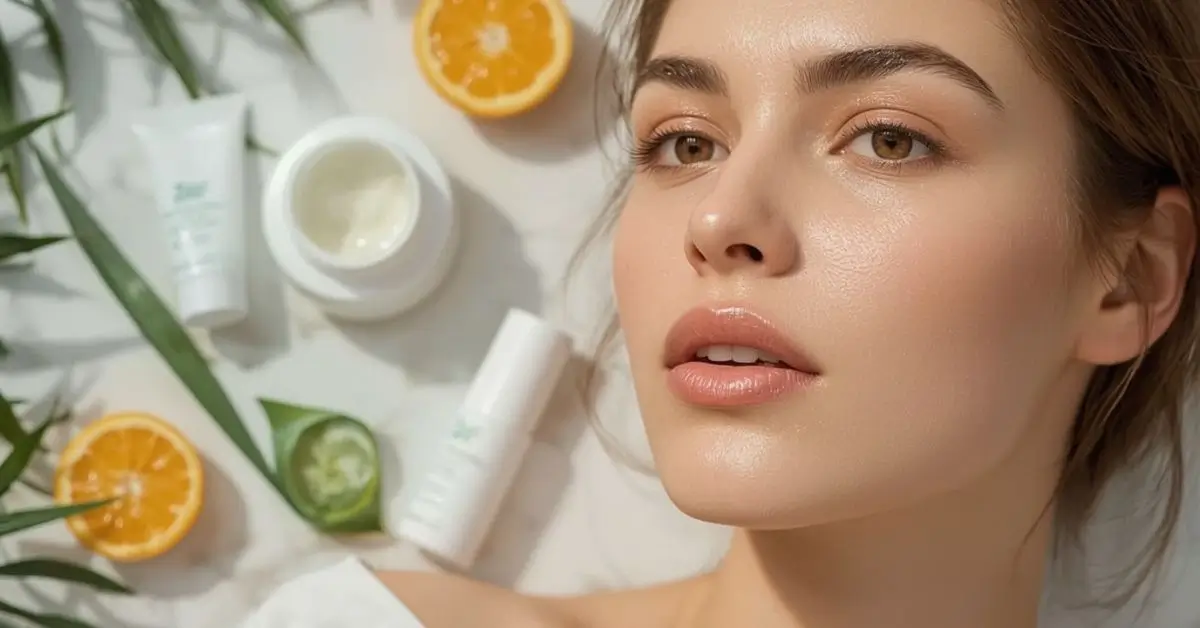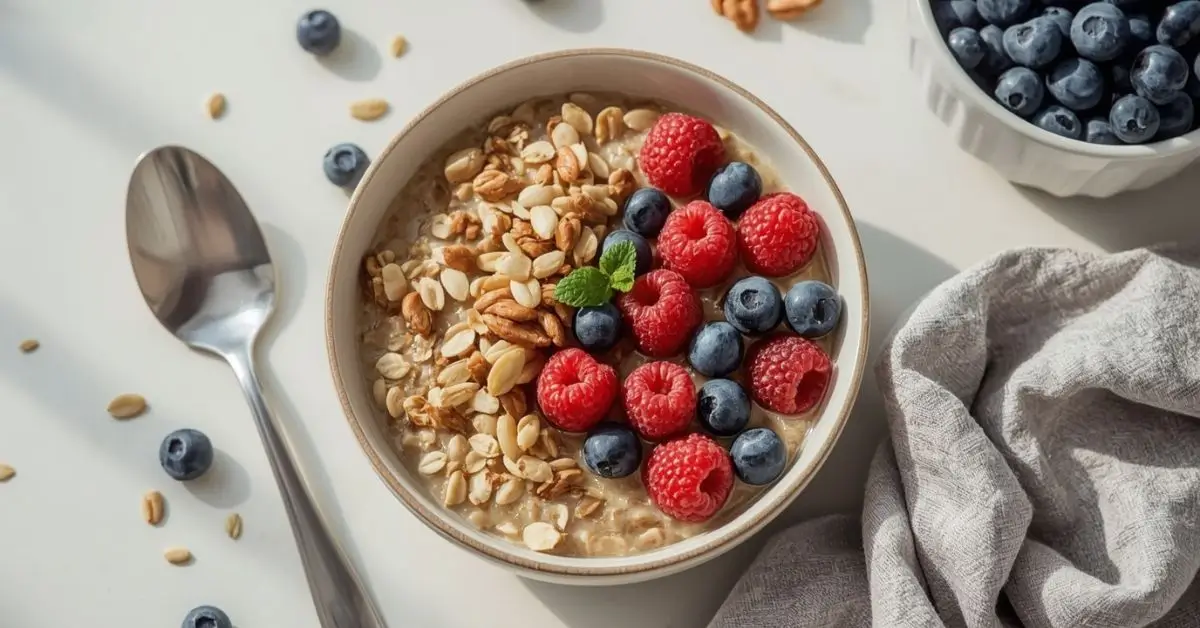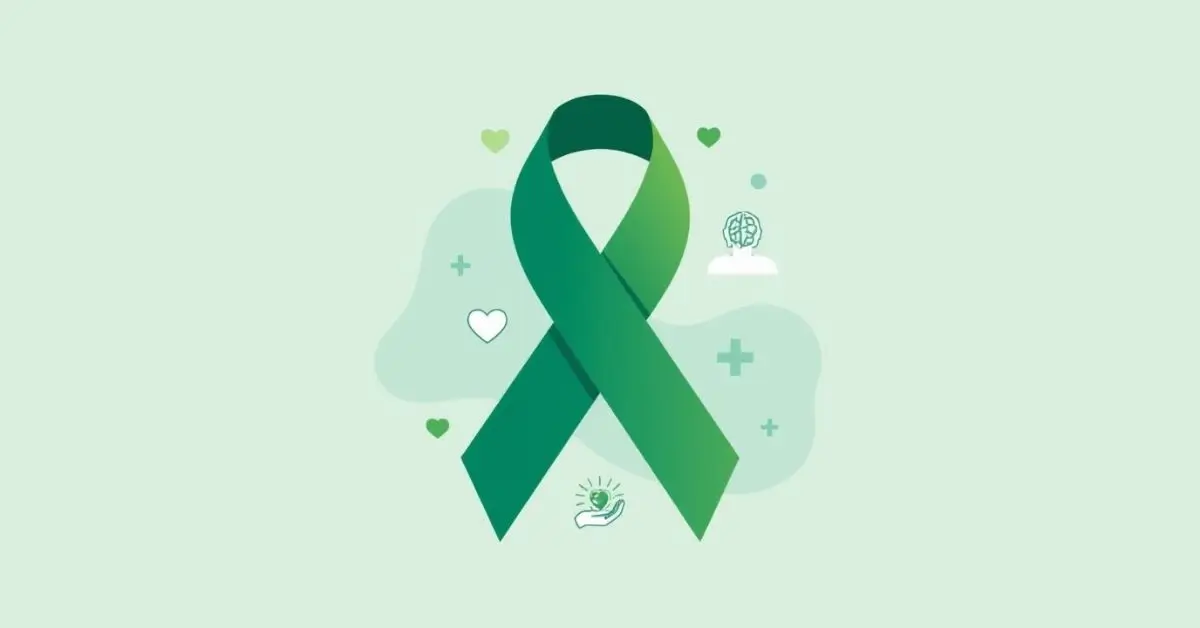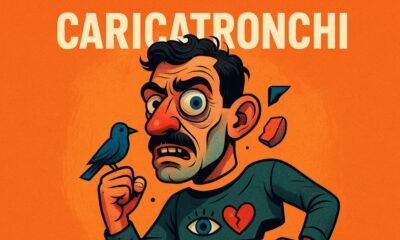Health
The Connection Between Dental Coverage and Peace of Mind in Retirement

Why Oral Health Matters More in Retirement
As people retire, the importance of maintaining oral health becomes significantly greater. Advancing age increases the risk of dental issues due to changes in the body, long-term wear and tear on teeth, and potential complications from chronic health conditions. For example, gum tissue naturally recedes with age, and enamel, the hard outer layer of the teeth, may erode over the decades, leaving teeth more vulnerable to decay and sensitivity. In addition, chronic diseases such as arthritis can make it more difficult to maintain regular brushing and flossing routines, further contributing to dental challenges. With more retirees recognizing the value of a healthy mouth, it’s crucial to consider practical strategies for protecting oral health well into later life, including regular dental checkups, professional cleanings, updated dental hygiene routines, and appropriate insurance coverage.
One of the top reasons dental health matters in retirement is its connection with overall wellness. Research shows a strong relationship between oral health and the risk of developing chronic diseases, such as diabetes, respiratory infections, and heart disease. Poor oral health can allow harmful bacteria to enter the bloodstream and contribute to these systemic health problems. Many retirees begin to look at insurance options—like VA dental insurance options—to help manage these risks and ensure their peace of mind. Maintaining oral health doesn’t just prevent pain and inconvenience—it directly supports a retiree’s ability to eat well, stay socially active, and enjoy a high quality of life.
Common Dental Concerns for Retirees
Tooth loss remains one of the most prevalent dental issues facing older adults. Losing teeth can not only affect the ability to eat and speak comfortably, but it can also impact self-esteem and overall quality of life. The physical changes that come with tooth loss can restrict food choices, leading to a less nutritious diet and potential weight loss. Gum disease is another widespread concern; it’s estimated that nearly two-thirds of adults aged 65 and older have gum disease, with factors such as poor oral hygiene, smoking, and chronic conditions heightening the risk. Gum disease can cause infections, bleeding gums, and even tooth loss.
Additionally, many retirees take one or more medications, some of which cause dry mouth, reducing saliva’s protective effects and increasing vulnerability to cavities and oral infections. Saliva is key in neutralizing acids and washing away food particles, so dry mouth can dramatically increase the risk of tooth decay and discomfort. Some medications for high blood pressure, depression, and allergies are known culprits. Awareness of these risks allows older adults to proactively adjust their dental care routines, such as using mouthwashes to combat dry mouth or chewing sugar-free gum to stimulate saliva production.
Many retirees are surprised by how quickly dental expenses can accumulate, particularly without employer-sponsored coverage. Out-of-pocket costs for cleanings, fillings, dentures, and more serious procedures may strain a fixed income. Costs for crowns, root canals, and implants can be especially burdensome, making it challenging for retirees to access necessary dental services. That’s why it’s vital to incorporate dental expenses into a retirement budget and explore dedicated dental insurance plans to help offset these costs.
One of the most common misconceptions is that Medicare covers routine dental care. In reality, Medicare rarely includes dental benefits, leaving retirees to seek supplemental coverage or pay for care themselves. This can be an overwhelming discovery for many newly retired individuals, as dental bills can appear unexpectedly and quickly climb into the hundreds or thousands of dollars. Understanding the limits of Medicare and the role of private insurance or discount plans is crucial for avoiding unexpected bills. It helps retirees gain control over their finances.
How Dental Coverage Supports Emotional Well-Being
Financial security plays a key role in lowering stress and anxiety during retirement. Worrying about the unexpected burden of dental expenses can be a source of tension, impacting both mental and physical health in the long term. Knowing you’re covered for unexpected dental expenses can foster a sense of control and peace of mind. Studies indicate that having reliable health insurance—including dental coverage—can significantly reduce anxiety about unforeseen health costs. This confidence often spills over into other aspects of life, encouraging retirees to participate more freely in social activities and focus on enjoying their retirement rather than dwelling on financial uncertainties.
For many retirees, the thought of a costly dental emergency can lead to sleepless nights or delayed care. Delaying needed dental treatment not only risks more severe health problems but also creates a cycle where financial anxiety impedes overall well-being. Dental insurance transforms this experience, providing confidence and assurance that professional care is always within reach. Numerous personal stories illustrate how even modest coverage can bring a newfound sense of well-being, allowing retirees to schedule regular exams and address minor issues before they become major concerns.
Comparing Types of Dental Plans for Retirees
Retirees may choose from several dental plan types, including private dental insurance, dental discount plans, and employer or union retiree plans. Each option comes with its own premiums, coverage, and limitations structure. When researching available options, it’s important to evaluate plan details: Does the coverage include preventive, restorative, and major services? Are your preferred dentists in-network? What are the premium and out-of-pocket costs, annual maximums for coverage? Some plans may seem affordable up front, but end up costing more due to coverage gaps or high deductibles.
Deductibles, claim processes, and coverage caps can vary widely. Calculating anticipated dental needs and comparing those against what each plan covers is wise. Review plan documents closely and ask questions about coverage limits before enrolling. This ensures you select a plan that fits your dental needs and financial situation. Consulting your dentist or a benefits advisor can also provide valuable insights into choosing the most appropriate coverage.
The Link Between Dental Health and Overall Health Outcomes
Regular dental exams go beyond cleaning teeth—they also allow dental professionals to spot early warning signs of systemic issues like anemia, diabetes, or certain cancers. Often, diseases manifest initial symptoms inside the mouth, so a dentist’s trained eye can contribute meaningfully to a retiree’s overall health monitoring. Older adults with good oral health often experience better general health outcomes and lower healthcare expenses.
Prioritizing dental health can contribute to longer, healthier retirement years and reduce the risk of hospitalizations or complications caused by preventable oral diseases. It’s a proactive step that supports independence, social engagement, and overall happiness in later life.
Simple Steps for Managing Oral Health in Retirement
Daily dental care remains vital for older adults. Brushing with a soft-bristle toothbrush and fluoride toothpaste, flossing or using interdental brushes, and rinsing after meals can help maintain healthy gums and teeth. Adopting an electronic toothbrush may assist those with dexterity problems. Choosing dental products formulated for sensitivity or dryness can also make routine care more comfortable, particularly for those experiencing medication-related side effects.
Older adults should also schedule preventive dental checkups at least twice a year. Catching potential problems early not only saves money but also improves overall health outcomes. Additionally, keeping an updated list of medications and sharing it with your dentist can help spot oral side effects before they become serious.
Frequently Asked Questions
Should retirees prioritize dental coverage along with other supplemental insurance?
Yes, dental coverage is an essential aspect of a well-rounded health plan in retirement. Given the connections between oral and overall health, most retirees consider securing dental insurance a wise decision. Dental insurance helps provide access to regular care and can prevent many future complications that might otherwise go untreated due to high costs.
What can one do if dental coverage isn’t affordable?
Consider seeking care at community health centers, dental schools, or looking into dental discount plans. Many communities offer sliding-scale fee structures to make oral care more affordable. Comparing your options thoroughly can help you find basic coverage or low-cost alternatives that fit your budget without compromising essential care.
How to find trusted information about senior dental health?
Reputable resources include the American Dental Association, National Institute on Aging, and large healthcare provider websites. Government-run health sites and major non-profit organizations also provide well-researched dental health information. Ask your healthcare provider for print materials or recommended online resources for up-to-date dental advice when in doubt.
Health
Brighten Best: Top Tips for Glowing Skin

When it comes to achieving a naturally luminous complexion, knowing how to brighten best is essential. Everyone wants skin that glows, looks even, and feels healthy, but with countless products, routines, and tips available online, figuring out what actually works can feel overwhelming. In this guide, we’ll break down everything you need to know about brightening your skin safely and effectively in 2025.
Why Skin Brightening Matters
Uneven skin tone, dark spots, and dullness are common concerns caused by sun exposure, aging, stress, and lifestyle factors. Brightening your skin doesn’t mean changing your natural color—it’s about enhancing radiance, balancing pigmentation, and improving overall texture.
A user recently shared: “I tried so many products, but my skin only looked healthy when I followed a proper routine with natural brightening ingredients. The results were incredible!”
Brighten Skin Naturally: Safe and Effective Approaches
Many people prefer natural methods over chemical-heavy products. Here’s how to brighten skin naturally without compromising skin health:
- Vitamin C Treatments: Vitamin C is a powerhouse antioxidant that helps reduce pigmentation and enhances collagen production. Applying a serum daily can visibly brighten the complexion over time.
- Aloe Vera: This soothing plant reduces redness, promotes healing, and helps even skin tone. Use fresh aloe gel on your face twice daily for the best effect.
- Honey and Lemon Masks: Honey nourishes while lemon gently lightens dark spots. A weekly mask can gradually improve radiance.
- Hydration: Drinking enough water keeps your skin plump and reduces dullness. Hydrated skin naturally reflects light better.
Best Skin Brightening Products in 2025
For those seeking quick and reliable results, best skin brightening products combine scientifically proven ingredients with safe formulations. Some top picks include:
- Brightening Creams and Serums: Look for products with niacinamide, licorice extract, or alpha arbutin. These ingredients target hyperpigmentation without irritation.
- Face Brightening Treatments: Chemical peels, microdermabrasion, or LED therapies performed by professionals can boost glow and improve skin tone.
- Top-Rated Brightening Skincare Lines: Brands offering layered routines—cleanser, toner, serum, moisturizer, and SPF—provide consistent results over time.
Brightening Creams and Serums: How to Choose
Not all brightening creams are created equal. To brighten dark spots and improve your complexion:
- Check Ingredients: Natural brightening ingredients like vitamin C, licorice root, and niacinamide are effective and safe.
- Consider Skin Type: Sensitive skin benefits from gentle formulations, while oily or acne-prone skin may prefer lightweight, non-comedogenic options.
- Sun Protection: Always pair brightening creams with SPF. Sun exposure can reverse the benefits.
Face Brightening Treatments: Professional Options
Sometimes, topical products aren’t enough. Face brightening treatments offered by dermatologists or licensed estheticians can enhance results:
- Chemical Peels: Exfoliate dead skin layers to reveal brighter skin beneath.
- Microdermabrasion: Non-invasive, mechanical exfoliation for smoother, glowing skin.
- Laser Therapy: Targets pigmentation and promotes collagen production.
Skin Tone Brightening Tips
Consistency is key when aiming to brighten complexion fast. Here are expert-recommended tips:
- Exfoliate 2–3 times per week to remove dead skin cells.
- Moisturize daily to maintain skin barrier health.
- Use antioxidants like vitamin E and ferulic acid to protect against environmental damage.
- Sleep 7–9 hours each night; cellular repair occurs during deep sleep.
Glowing Skin Remedies You Can Try at Home
If you prefer DIY solutions, glowing skin remedies can complement professional products:
- Oatmeal and Yogurt Masks: Soothes and nourishes while gently exfoliating.
- Green Tea Toners: Reduces inflammation and boosts radiance.
- Turmeric Paste: A natural anti-inflammatory that helps even out skin tone.
Natural Brightening Ingredients You Need
In 2025, consumers are increasingly conscious of ingredients. Look for these natural brightening ingredients in your skincare:
- Licorice Root Extract: Reduces pigmentation and brightens skin tone.
- Niacinamide (Vitamin B3): Enhances skin barrier and reduces dark spots.
- Vitamin C: Antioxidant properties lighten pigmentation and improve radiance.
- Alpha-Arbutin: Targets stubborn dark spots and hyperpigmentation safely.
How to Brighten Dark Spots Effectively
Dark spots can be persistent, but a combination of treatments and products works best:
- Apply targeted serums with vitamin C or alpha-arbutin.
- Use gentle exfoliants weekly to speed up cell turnover.
- Always protect your skin with SPF during the day to prevent new pigmentation.
Brighten Complexion Fast: Daily Routine
A simple routine to brighten complexion fast includes:
- Cleanser: Remove impurities and makeup.
- Toner: Restore pH balance and prepare for active ingredients.
- Serum: Apply brightening serum with vitamin C or niacinamide.
- Moisturizer: Lock in hydration.
- Sunscreen: Prevent UV damage and pigmentation.
Consistency over weeks delivers the best results.
Top-Rated Brightening Skincare Products
Here’s a curated list of top-rated brightening skincare available in 2025:
- Vitamin C serums with stable formulations.
- Niacinamide-based moisturizers for even skin tone.
- Licorice root extract creams for dark spots.
- Alpha-arbutin serums for stubborn pigmentation.
FAQ’s
A: Use a combination of natural brightening ingredients like vitamin C, aloe vera, and honey, along with proper hydration and sun protection.
A: Serums or creams containing alpha-arbutin, niacinamide, or licorice extract are effective for targeting dark spots safely.
A: Visible results typically appear in 4–6 weeks with consistent use of brightening products and daily SPF.
A: Yes, options include chemical peels, microdermabrasion, and laser therapy performed by licensed professionals.
Final Thoughts
Achieving a radiant, glowing complexion is possible by knowing how to brighten best through a combination of natural methods, effective products, and professional treatments. Prioritize ingredients you trust, stay consistent with your routine, and protect your skin from sun damage.
Health
What Is Oat Bran? A Guide for Health-Conscious Adults

If you’ve ever wondered “what is oat bran?”, you’re not alone. For health-conscious adults, people managing cholesterol, fitness enthusiasts, and diabetics, oat bran is a nutritional powerhouse worth understanding. Unlike regular oatmeal, oat bran offers concentrated fiber, essential nutrients, and heart-healthy compounds that can improve digestion, manage blood sugar, and support weight management.
In this guide, we’ll explore oat bran nutrition facts, its health benefits, how it compares to oatmeal, and practical ways to include it in your diet.
What Is Oat Bran?
Oat bran is the outer layer of the oat grain, rich in soluble fiber, vitamins, and minerals. It’s often separated during milling to produce refined oats but retains much of the grain’s health-boosting properties.
Key Characteristics:
- High in beta-glucan, a soluble fiber linked to cholesterol reduction.
- Contains B vitamins, magnesium, and antioxidants.
- Can be consumed as porridge, added to smoothies, or baked into recipes.
Oat Bran vs Oatmeal: What’s the Difference?
| Feature | Oat Bran | Oatmeal |
|---|---|---|
| Part of the Grain | Outer layer | Whole oat groat or rolled oats |
| Fiber Content | Higher | Moderate |
| Cooking Time | 2–5 minutes | 5–10 minutes (rolled oats) |
| Health Focus | Cholesterol & heart health | General nutrition & energy |
| Common Use | Porridge, smoothies, baking | Breakfast cereal, snacks |
Tip: If your goal is high fiber and heart health, oat bran is often the better choice.
Health Benefits of Oat Bran
Supports Heart Health
Oat bran contains beta-glucan, a soluble fiber that binds to cholesterol in the digestive tract, helping to reduce LDL (“bad”) cholesterol. Studies show 3 grams of beta-glucan daily can significantly improve heart health (Harvard T.H. Chan School of Public Health, 2022).
Aids Digestion
Its high fiber content promotes regular bowel movements and supports a healthy gut microbiome.
Helps Manage Blood Sugar
Soluble fiber slows the absorption of glucose, making oat bran beneficial for diabetics and pre-diabetics.
Supports Weight Management
Oat bran expands in the stomach, increasing satiety and reducing overall calorie intake.
Oat Bran Nutrition Facts
| Nutrient | Amount per 1/2 cup (40g) |
|---|---|
| Calories | 80 |
| Total Fat | 1.5 g |
| Carbohydrates | 27 g |
| Fiber | 6 g (mostly soluble) |
| Protein | 5 g |
| Magnesium | 60 mg |
| Iron | 2 mg |
| Beta-glucan | 3 g |
How to Eat Oat Bran
Quick Ideas:
- Porridge: Cook with milk or water for 2–3 minutes, top with fruit.
- Smoothies: Add 2 tablespoons to your morning smoothie for fiber boost.
- Baking: Incorporate into muffins, breads, and cookies.
- Cereal Mix: Combine with other grains for a nutrient-dense breakfast.
Tip for Diabetics: Pair oat bran with protein (e.g., yogurt or nuts) to further stabilize blood sugar.
Oat Bran Recipes
- Classic Oat Bran Porridge: Cook ½ cup oat bran in 1 cup milk/water; top with berries, chia seeds, and honey.
- Oat Bran Pancakes: Substitute ¼ cup oat bran for flour in pancake recipes for added fiber.
- Oat Bran Muffins: Blend with whole wheat flour, bananas, and cinnamon for heart-healthy snacks.
FAQ’s
What is oat bran and how is it different from oatmeal?
Oat bran is the outer layer of oats, richer in fiber and beta-glucan, while oatmeal is made from the whole oat grain or rolled oats.
What are the health benefits of oat bran?
It lowers cholesterol, supports digestion, helps manage blood sugar, and may aid in weight loss.
Is oat bran good for lowering cholesterol?
Yes, the beta-glucan soluble fiber in oat bran binds to cholesterol and helps remove it from the body.
How much fiber is in oat bran?
A ½ cup (40g) serving contains about 6 grams of fiber, mostly soluble.
How do you cook oat bran for breakfast?
Cook with milk or water for 2–3 minutes, stir, and top with fruit, nuts, or seeds.
Can oat bran help with weight loss?
Yes, it increases satiety, which can reduce overall calorie intake.
Is oat bran safe for diabetics?
Absolutely—its soluble fiber slows glucose absorption, helping regulate blood sugar.
Best ways to include oat bran in your diet?
Porridge, smoothies, muffins, breads, or as a cereal topping.
Conclusion
Understanding what is oat bran and how to use it can transform your diet. From heart health to blood sugar management and weight control, oat bran is a simple, versatile, and nutrient-dense addition to meals. Whether you’re a home cook, fitness enthusiast, or health-conscious individual, incorporating oat bran into your daily routine can yield meaningful health benefits.
Health
The Meaning Behind the Mental Health Awareness Color

Colors carry powerful meaning. For mental health advocates, nonprofits, educators, healthcare professionals, event organizers, and the general public, knowing the mental health awareness color helps spark conversations, unify campaigns, and show visible support.
Just like pink symbolizes breast cancer awareness, the green awareness ribbon has become the global emblem for mental health. But why green? And how can individuals and organizations use it effectively? This guide explores its history, symbolism, and application—so you can confidently integrate it into events, education, and advocacy.
What Is the Mental Health Awareness Color?
The official mental health awareness color is green. It represents:
- Hope and renewal → reminding us of growth and recovery.
- Balance and calm → reflecting emotional stability.
- Support and unity → showing solidarity with individuals affected by mental illness.
What color ribbon represents mental health?
The green ribbon mental health symbol is universally recognized. Wearing it on clothing, accessories, or mental health awareness bracelet colors shows support and sparks meaningful conversations.
Why Is Green the Color for Mental Health Awareness?
The history of green as the chosen color dates back to the 19th century, when green was linked with freedom from oppression and healing. Over time, it became associated with balance, renewal, and growth in psychological contexts.
- In psychology of color in mental health, green is believed to calm anxiety and reduce stress.
- It also bridges the gap between nature and human emotions, reinforcing connection and healing.
(Source: American Psychological Association, “The Power of Color in Mental Health,” 2023)
Mental Health Awareness Month Color Guide
Every May, organizations highlight Mental Health Awareness Month. Using consistent colors and symbols ensures stronger visibility.
| Symbol / Color | Meaning & Usage |
|---|---|
| Green Awareness Ribbon | Core symbol for all mental health awareness |
| Lime Green (neon green) | Used in some campaigns for youth mental health |
| Multicolor bracelets or bands | Show support for multiple mental health causes |
| Complementary colors (blue, yellow) | Sometimes used for specific conditions like anxiety or bipolar awareness |
Symbolic Colors for Mental Health Support
While green is the official mental health awareness color, other colors are sometimes used to represent specific conditions:
- Teal → anxiety awareness
- Yellow → suicide prevention
- Blue → depression support
- Purple → eating disorders awareness
This sometimes causes confusion. For example, people often ask:
- “What colors support anxiety and depression awareness?” → Teal and blue.
- “What is the difference between mental health awareness color and suicide prevention color?” → Green represents mental health generally, while yellow specifically symbolizes suicide prevention.
How to Use the Mental Health Awareness Color in Campaigns
Event organizers, HR teams, and advocates can integrate green in practical ways:
- Events & Walks → Distribute green ribbons, shirts, or wristbands.
- Schools & Colleges → Encourage students to wear green during awareness weeks.
- Workplace Campaigns → Add green banners, posters, or desk accessories.
- Online Campaigns → Use green in graphics, logos, and social media branding.
Tip: Pair the mental health campaign colors with powerful stories and educational resources for maximum impact.
Colors Representing Emotional Well-Being
Colors can influence mood and emotional responses. According to research on the psychology of color in mental health (Source: Verywell Mind, 2024):
- Green → promotes calm, renewal, hope.
- Blue → reduces stress and fosters peace.
- Yellow → evokes optimism but must be used carefully (too bright can trigger anxiety).
- Purple → inspires creativity and reflection.
This is why green works so well as the mental health awareness color—it represents healing and balance across cultures.
FAQ’s
What is the mental health awareness color?
Green is the official color, symbolized by the green awareness ribbon.
Why is green the color for mental health awareness?
Green represents growth, renewal, and calm, aligning with recovery and emotional balance.
What color ribbon represents mental health?
The green ribbon mental health symbol is globally recognized.
What colors support anxiety and depression awareness?
Teal supports anxiety awareness, while blue represents depression awareness.
Difference between mental health awareness color and suicide prevention color?
Green = mental health awareness in general. Yellow = suicide prevention specifically.
How to use the mental health awareness color in campaigns?
Use green in clothing, bracelets, posters, or online branding during awareness events.
Conclusion
The mental health awareness color is more than just a shade—it’s a symbol of hope, support, and healing. From nonprofits to educators, healthcare professionals, event organizers, and the general public, using green helps amplify awareness campaigns and reduce stigma.
By incorporating green awareness ribbon symbols, mental health support colors, and thoughtful design choices, you can foster more meaningful conversations and contribute to a healthier, more compassionate community.
-

 BLOG6 months ago
BLOG6 months agoBerniece Julien: The Quiet Power Behind the Spotlight
-

 BLOG6 months ago
BLOG6 months agoCineby App (2025): Features, Download & Fixes Guide
-

 ENTERTAINMENT6 months ago
ENTERTAINMENT6 months agoErome Uncovered: A Closer Look at the NSFW Content Platform
-

 EDUCATION6 months ago
EDUCATION6 months ago42°C to °F – Real Impact of Extreme Heat
-

 ENTERTAINMENT6 months ago
ENTERTAINMENT6 months agoScoutedToday: Discovering Tomorrow’s Talent Today
-

 TECH6 months ago
TECH6 months agoHow to Fix ‘Fatal glibc error: CPU Does Not Support x86‑64‑v2’ on Legacy Hardware
-

 TECH6 months ago
TECH6 months agoCaricatronchi: Redefining Digital Caricature
-

 ENTERTAINMENT6 months ago
ENTERTAINMENT6 months agoMangaFire Explored: Your Gateway to Free Manga Reading
